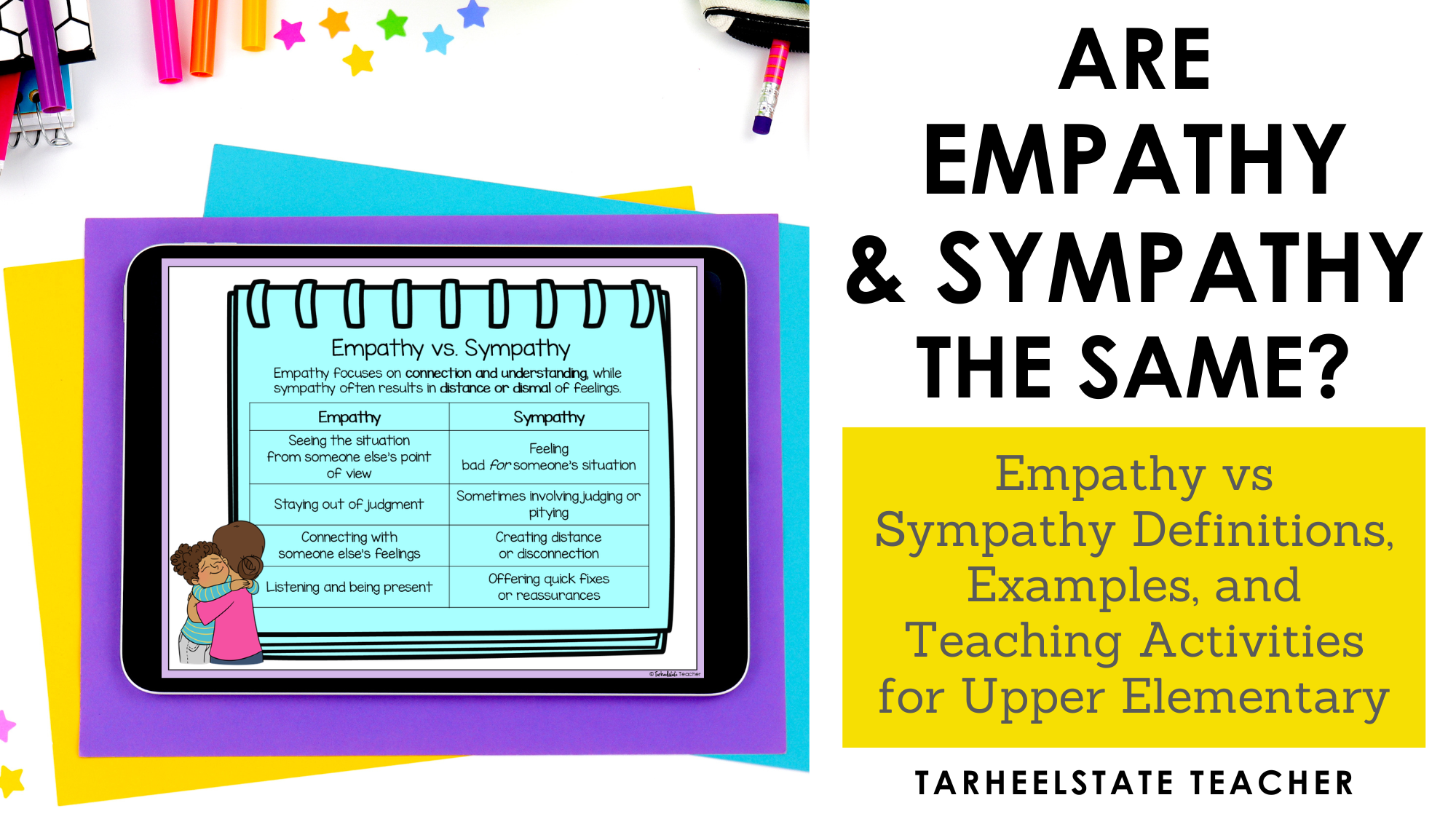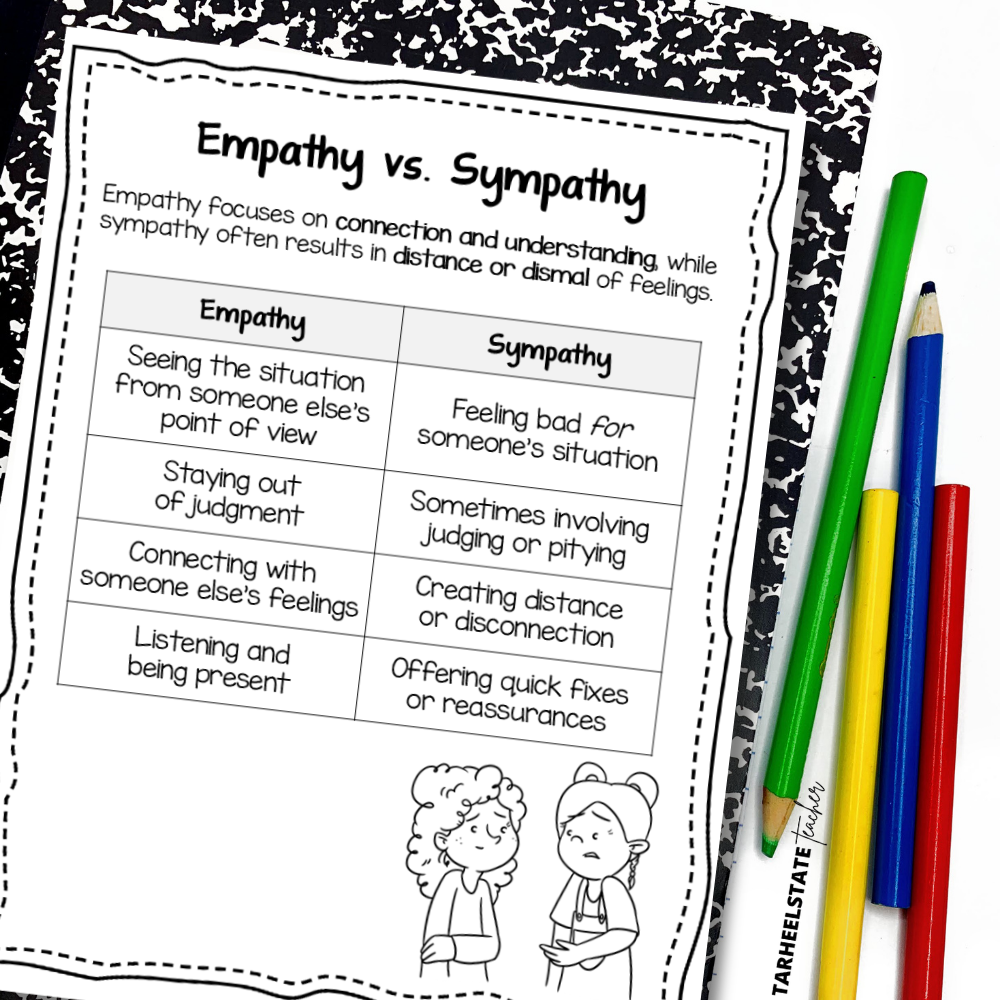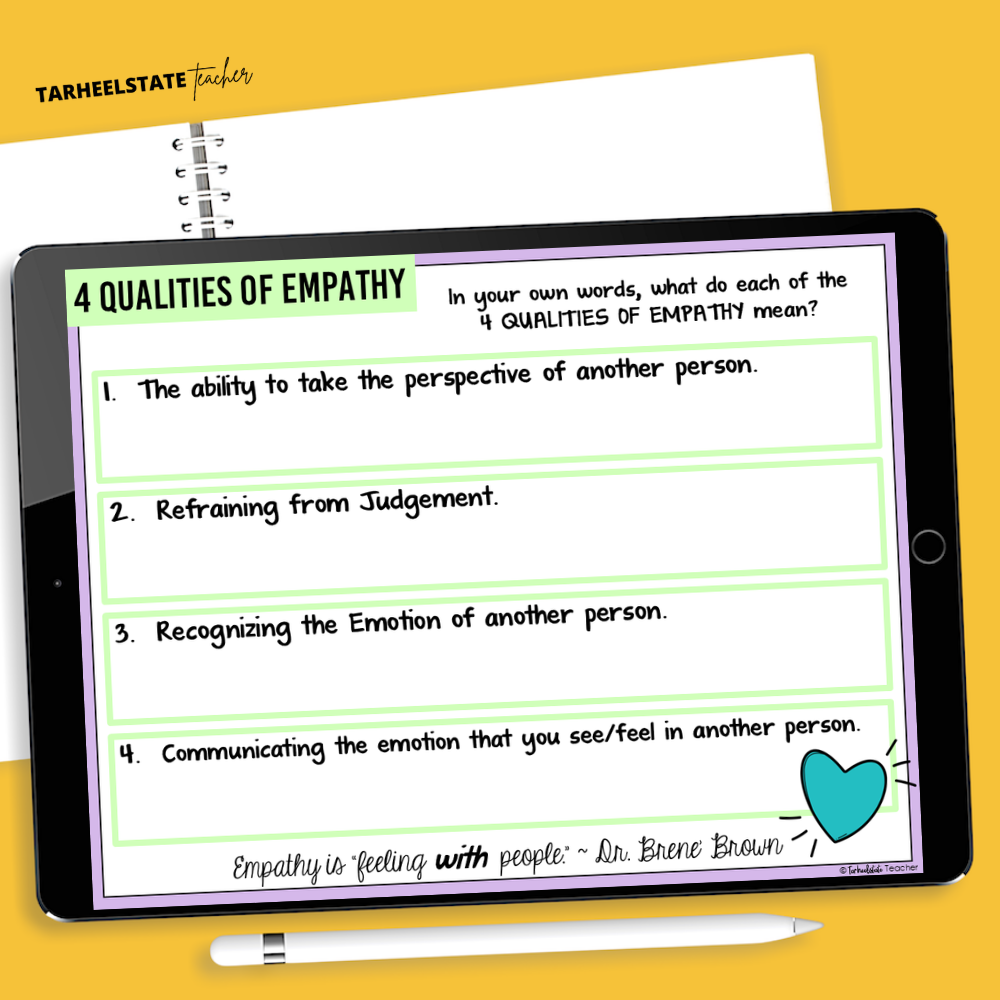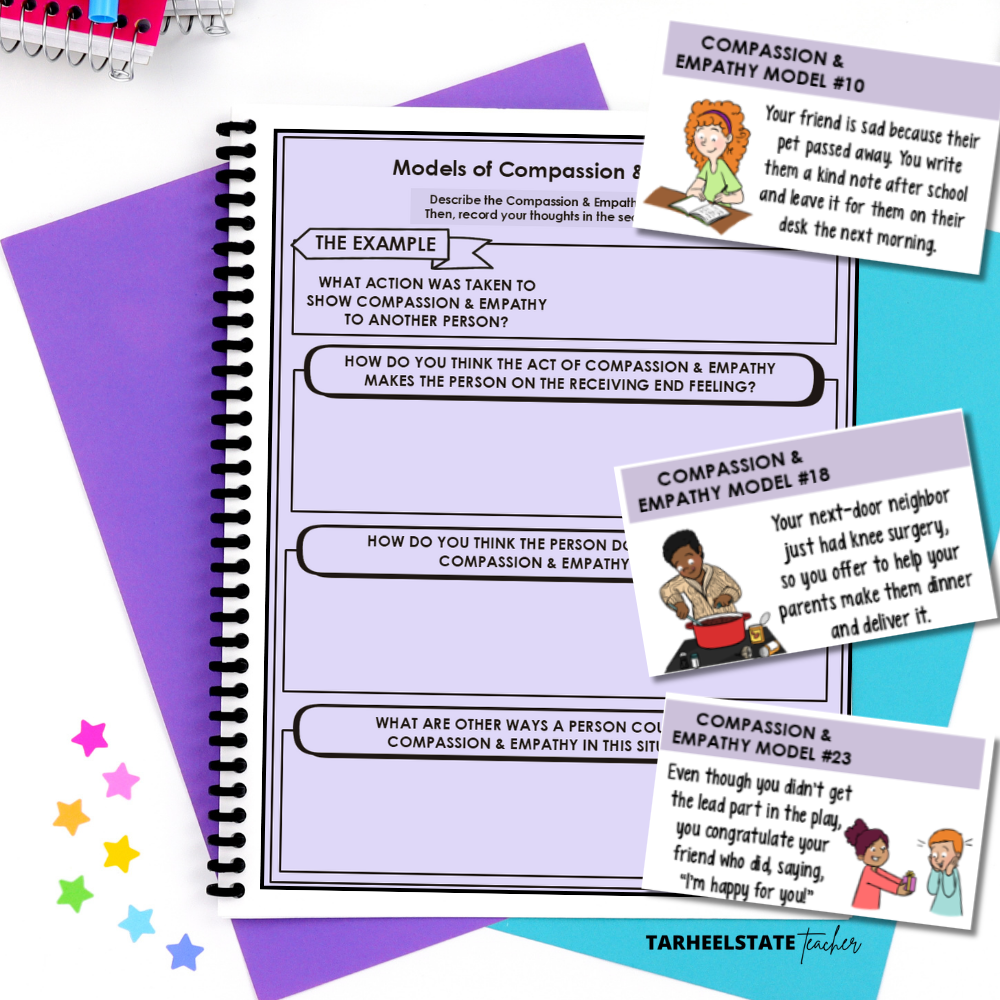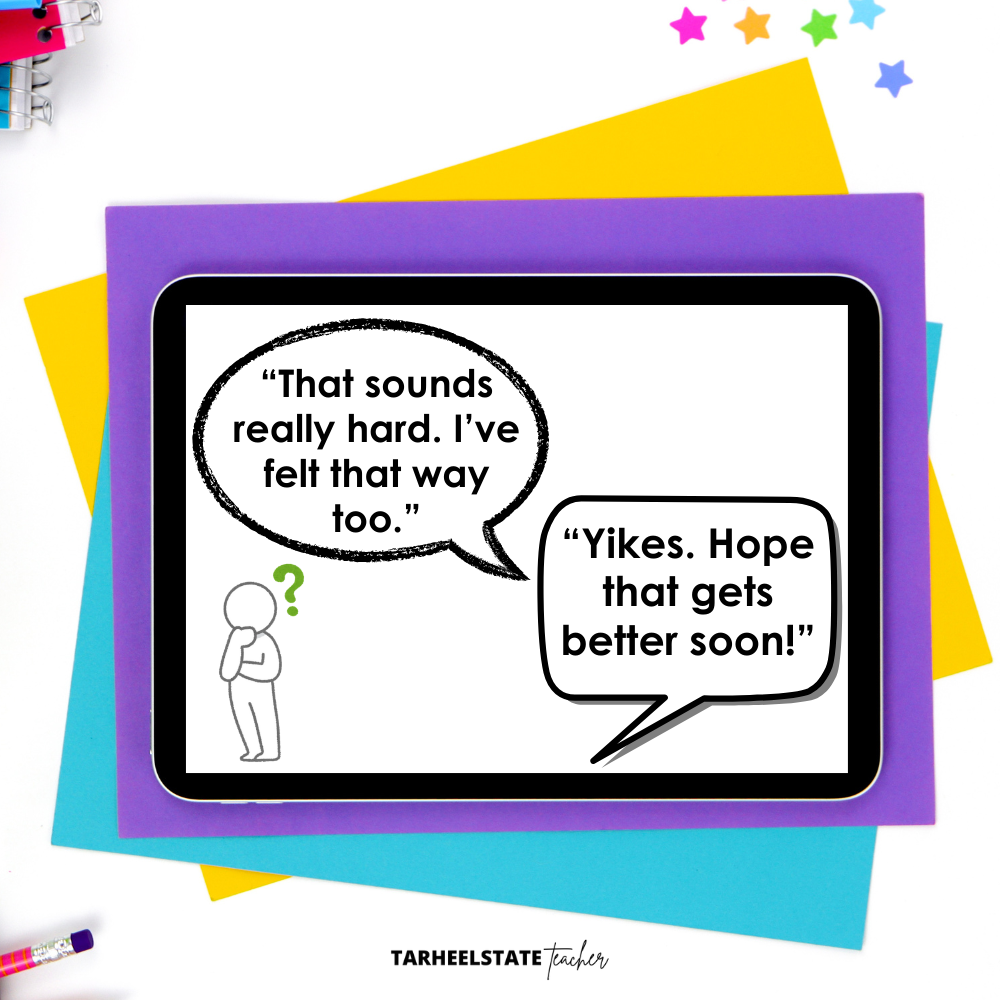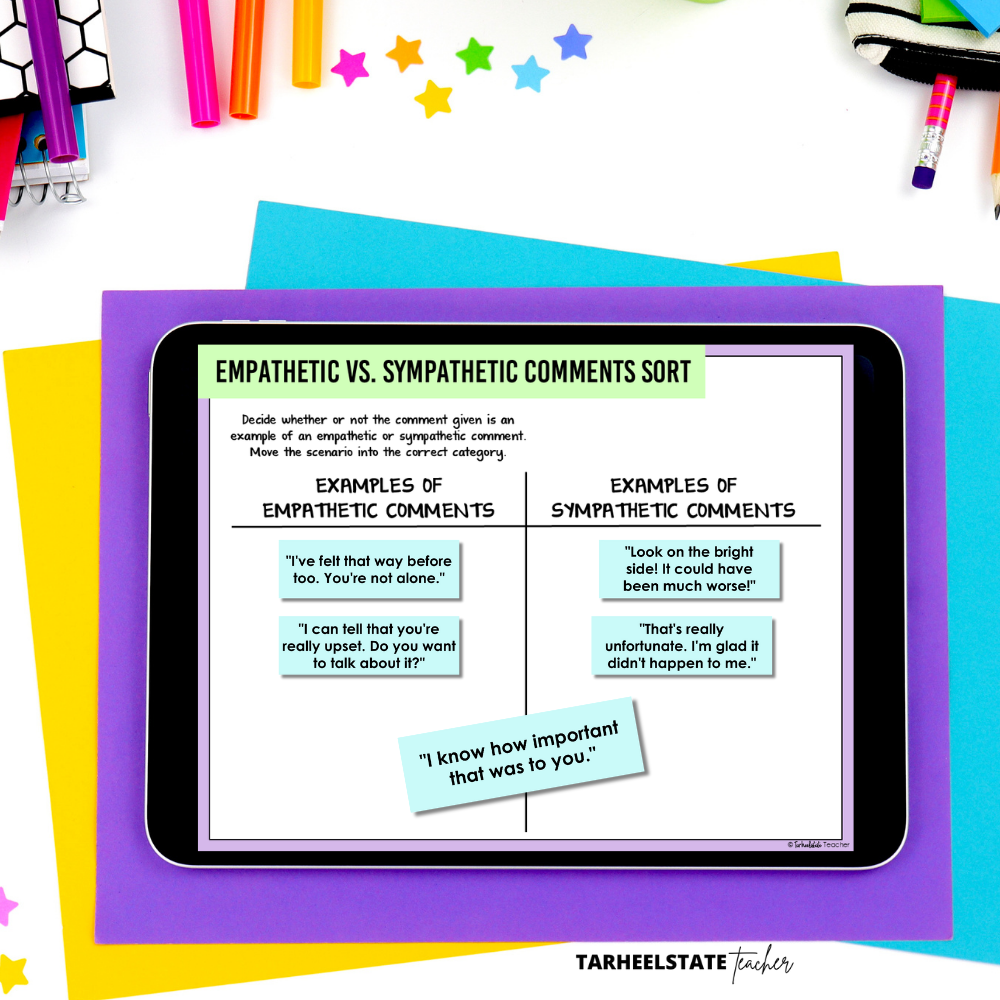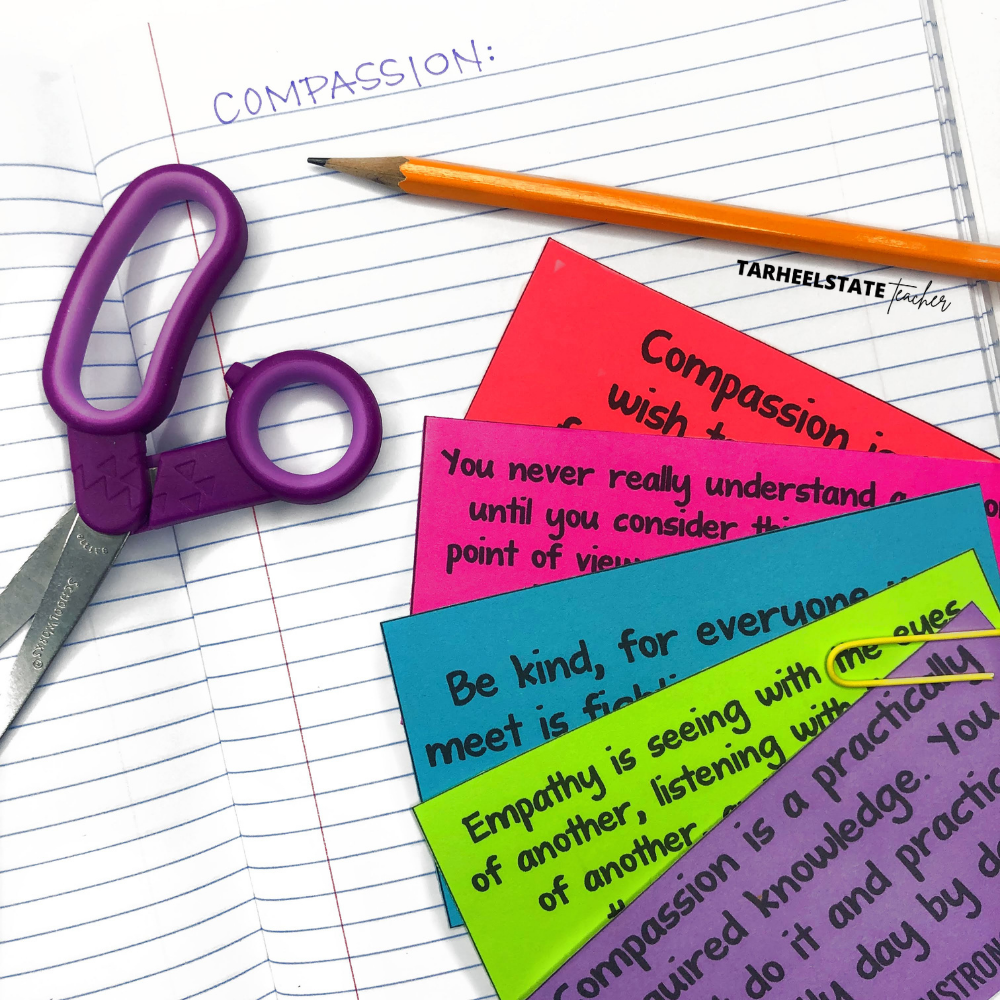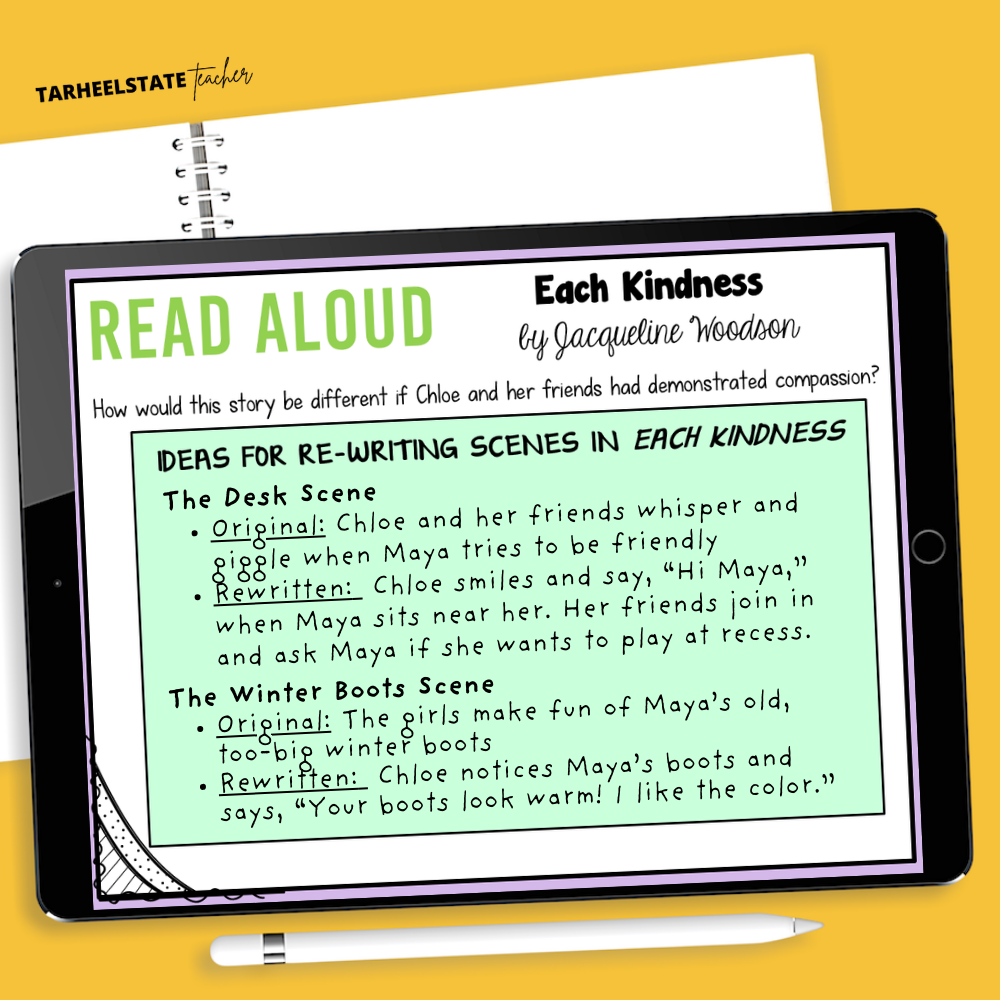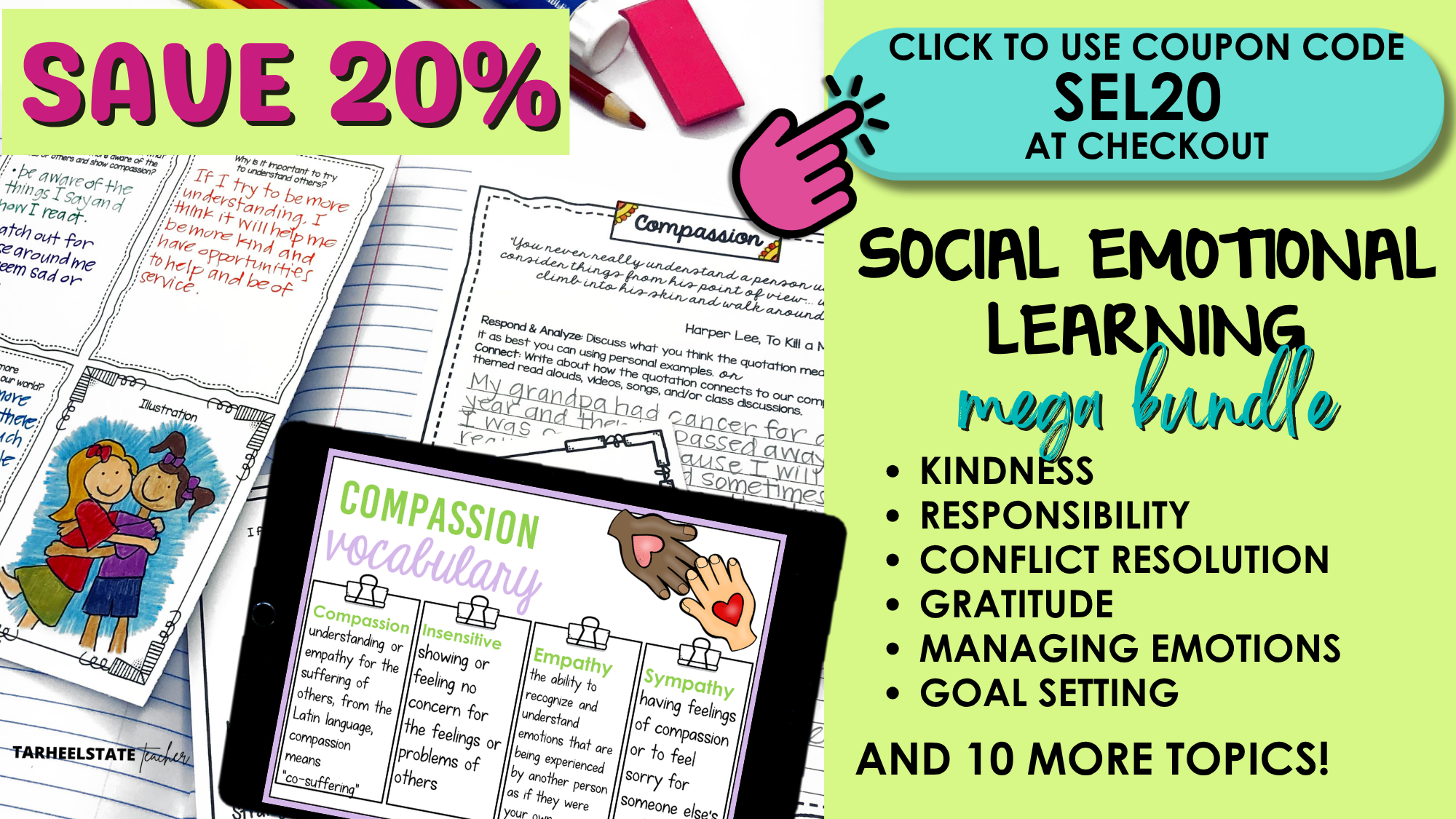Are Empathy and Sympathy the Same? Empathy vs Sympathy Definitions, Examples, and Teaching Activities for Students
When a student’s face falls at recess or a classmate walks into the room looking teary-eyed, the way others respond matters. One might say, “That’s too bad. I hope you feel better soon.” Another might quietly sit next to them and say, “I can tell you’re really sad. I’m here for you.”
Both responses come from a good place—but only one builds a meaningful connection.
This small moment brings us to a big question that’s worth exploring with students:
Are empathy and sympathy the same?
Let’s break it down together—looking at the definitions, real-life examples, classroom activities, and teaching tools that help students understand the difference and put empathy into action.
Empathy vs Sympathy: SIMPLE DEFINITIONS FOR STUDENTS
What’s the definition of empathy vs sympathy?
Empathy is feeling with someone. It means putting yourself in their shoes and understanding their emotions from their point of view.
Sympathy is feeling for someone. It’s recognizing someone’s hardship, but staying more distant—offering comfort or pity rather than true emotional connection.
Consider displaying an empathy vs sympathy chart in your classroom to help students remember the difference.
THE Empathy vs Sympathy Brene Brown Video (A CLASSROOM FAVORITE)
One of the most engaging ways to teach the difference between empathy and sympathy is with the empathy vs sympathy video by Brené Brown. This short animated clip has become a favorite for educators because it breaks down complex emotional concepts in a simple, memorable way.
In the video, Brené explains that:
“Empathy fuels connection. Sympathy drives disconnection.”
She walks viewers through four qualities of empathy:
Perspective taking
Staying out of judgment
Recognizing emotion in others
Communicating that recognition
Watch it as a class, then pause to reflect or journal:
What’s the difference between feeling with someone (empathy) and feeling for someone (sympathy)?
Which of the four empathy skills do you think is the hardest? Why?
Can you think of a time someone showed you empathy—or when you wish they had?
This video is a simple, high-impact way to help students internalize the meaning of empathy vs sympathy and recognize how these emotional responses affect their relationships. You can even have them research empathy vs sympathy definitions online and create Venn diagrams, posters, or mini-presentations explaining the difference in their own words.
WHEN SYMPATHY IS HELPFUL (AND WHEN IT’S NOT)
Sympathy isn’t a bad thing—it often comes from a genuine place of wanting to comfort someone. It can be helpful in certain situations, especially when you're not sure what the other person is feeling or when you're not ready to connect on a deeper level.
So when is sympathy helpful?
When you're showing basic kindness to someone you don’t know well.
When a person isn’t ready to talk deeply about their feelings.
When acknowledging pain, even briefly, is better than saying nothing at all.
When you're not sure how they feel but still want to be supportive in a small way.
For example:
If a student you don’t know well lost their pet and you say, “I’m really sorry to hear that,” that’s a sympathetic response—but still a kind and appropriate one.
If someone is crying in the hallway and you gently say, “I hope things get better soon,” that might not be deep connection—but it still shows care.
But when is empathy more helpful?
When you want to build or deepen a relationship.
When someone is clearly struggling and needs to feel understood.
When a situation calls for more than just words—it calls for presence.
WHAT EMPATHY LOOKS LIKE: MINI STUDENT SCENARIOS
Before students can practice empathy, they need to recognize it in action. Try sharing short real-life situations like these to think through and discuss as a group:
Your friend is sad because their pet passed away. You write them a kind note after school and leave it for them on their desk the next morning.
How do you think the act of compassion and empathy makes the person on the receiving end feel?
How do you think the person doing the act of compassion and empathy feels?
What are other ways a person could show compassion and empathy in this situation?
These compassion and empathy scenarios help students see how empathetic responses build connection—and why that matters.
WHAT EMPATHY SOUNDS LIKE: EMPATHETIC VS SYMPATHETIC RESPONSES
Try this hands-on empathy activity to get your students talking and thinking deeply:
Display two comments, one that is empathetic and one that is sympathetic.
2. Ask students to discuss:
Which comment feels more empathetic? Why?
How would you feel if someone said each to you?
3. Divide students up into partners or small groups and give them various empathy vs sympathy statements. Have them sort the statements them into “Empathetic Responses” and “Sympathetic Responses” piles and then discuss how they made their choices.
EVERY DAY WAYS TO PRACTICE EMPATHY IN THE CLASSROOM
Morning Meeting Check-Ins: Ask “What’s something that made you feel seen or unseen this week?” not just “How are you?”
Reflect on Empathy Quotes: Use quotes on empathy and compassion as writing prompts or discussion starters.
Read Alouds: Choose picture books about empathy that showcase understanding and connection. I’ve included a list of my top favorites in my Compassion and Empathy SEL Unit.
Modeling: Narrate your own thinking when you notice a student struggling: “I saw that you looked frustrated, and I wanted to check in. I know that feeling.”
Practice Role-Playing: Use short perspective taking and empathy scenarios where students act out how to respond to a friend who feels left out, embarrassed, or hurt. Then reflect:
“What did the empathetic response sound like? What made it effective?”
Student-Led “How Would You Feel?” Circle: Let students take turns leading a short scenario discussion where they ask: “How would you feel if…” followed by a situation, like forgetting your lunch or being excluded from a game.
For even more, check out my full blog post: How to Teach Empathy in the Classroom: 10 Empathy Classroom Activities That Really Work
NEED MORE EMPATHY ACTIVITIES AND DONE-FOR-YOU RESOURCES FOR TEACHING COMPASSION?
You can manage to do each of these activities with a reflection journal and materials you have around the classroom, but if you want some of the work done for you, you can check out my Compassion & Empathy SEL unit. I use this unit for a 2-3 week morning meeting unit. It includes student journal pages, detailed and editable compassion and empathy lesson plans, bulletin board materials with compassion vocabulary and related empathy quotations, and Google Slides for the teacher and a digital student notebook. This Compassion & Empathy theme SEL unit is also included in the SEL Morning Meeting MEGA Bundle that contains 16 social- emotional learning themes. If you’re looking to increase your social-emotional learning focus, you’ve come to the right place!
SEL THEMES TO GUIDE YOUR MORNING MEETINGS ALL YEAR
This Compassion & Empathy themed SEL unit is also included in the SEL Morning Meeting MEGA Bundle that contains 16 social-emotional learning themes. With units focused on gratitude, empathy and compassion, growth mindset, conflict resolution and compromise, grit and perseverance, responsibility, understanding and managing emotions, and so much more, your engaging SEL or morning meeting plans are done for you and your students will love them!
If you purchase the bundle from my personal website store, you can save an additional 20% on the SEL Mega Bundle of all 16 topics with the code SEL20.

